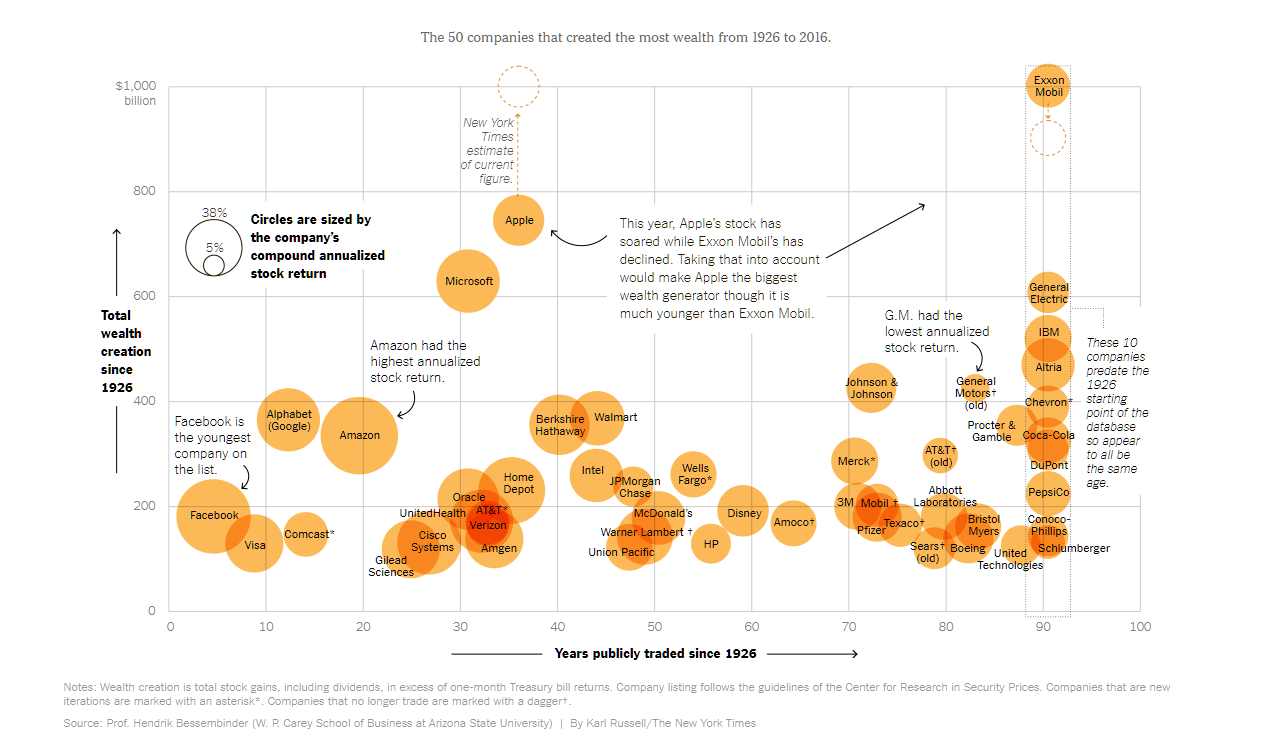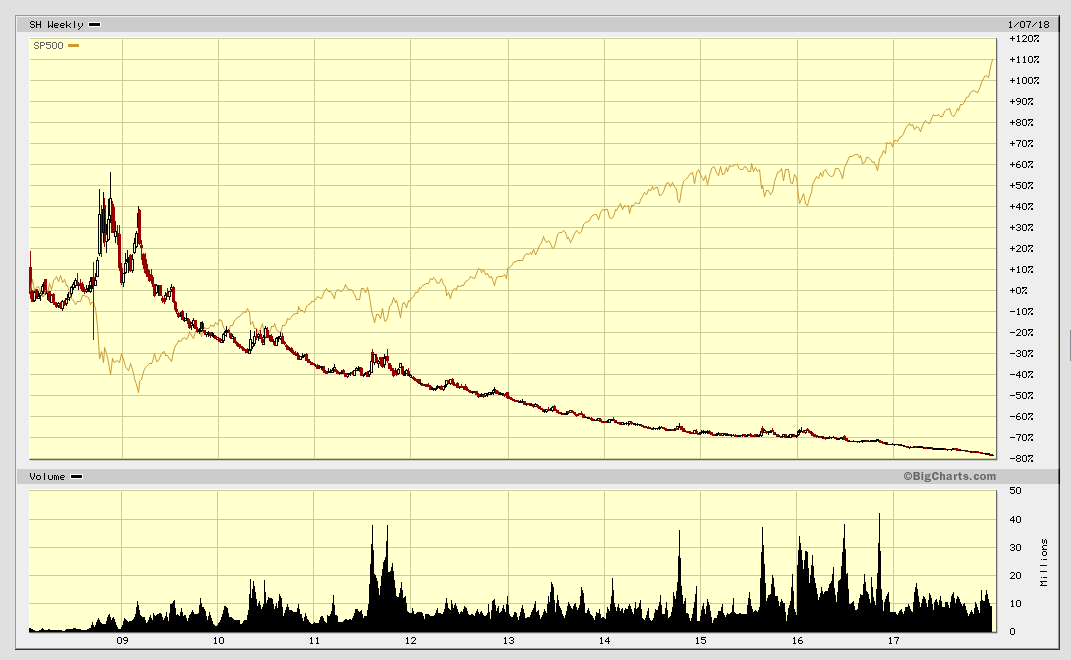The previous post about bear market funds and the difficulties they have faced during the current spectacular US bull market fascinated me. My central point of interest is based around the question – why would you bother? There are a few conflicting points that come to mind. Markets in general have strong upward bias. However, this is a bias in the index and is an artefact of their construction. It is not reflective of the generally misplaced belief that the majority of stocks always go up. This is a naive assumption by those on the sell side of investing. In reality the research seems to indicate that the long term return for the majority of stocks is less than the return available from treasury bills.The majority of gains in the market come naturally from a handful of instruments over a very short space of time. The following graphic from The New York Times illustrates this neatly.
I can understand that those who run bear market funds may have this in the back of their minds. If the majority of market wealth comes from a small basket of instruments then that leaves a large universe of candidates that under perform and are ripe for short selling. But and there is always a but, under performance does not mean that a stock falls precipitously, it simply means that it has a performance lower than a given benchmark. Allied to this is the issue of picking stocks that have the capacity to move sharply lower. As has I have often written in the past fund managers are captive to their own narrative and this narrative often has little resemblance to actual trajectory of price. However, the most telling factor against such funds is opportunity cost – you miss out on all the wealth creation shown in the graphic above and it is possible display all these factors conspiring against bear market funds in a single chart. The chart below compares the performance of the S&P 500 versus the ProShares Short S&P 500.
As you can see the value of the ETF has been destroyed as the index has consistently moved higher. What is interesting about this is that traders continue to take positions in bearish ETFs despite the market moving higher. There is a perverse sense of either self destruction or mindless conviction in their activities. This pattern is repeated no matter which ETF you view – price is hammered yet traders keep coming back for more. And just to rub it in I was curious as to what the picture looked like when you compared a bearish S&P 500 ETF with a geared bullish S&P 500 ETF.
The sin of Hubris is nothing if not expensive.






